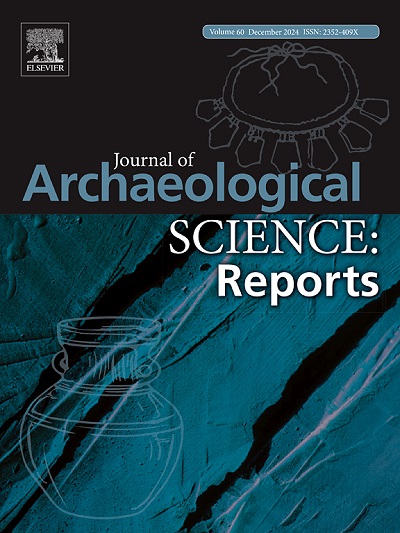Herding the flocks, harvesting the coast? The life of islanders at the Early Cycladic site of Dhaskalio (2,750–2,250 BCE)
IF 1.5
2区 历史学
0 ARCHAEOLOGY
引用次数: 0
Abstract
The paper presents results of the study of the terrestrial and marine remains from the Early Bronze Age (2750–2250 BCE) site of Dhaskalio, off the island of Keros. Recent excavations (2016–2018) produced an extremely rich faunal assemblage, including terrestrial mammals, marine shells, fish, avian fauna, land snails and microfauna, among the largest in Bronze Age Cyclades. In this paper, we deal with the terrestrial and marine resources, and we focus on a key research question, namely what were the animal exploitation and meat procurement strategies at Dhaskalio. This question is central to our understanding of the lifeways of the site, as several lines of material culture and organic evidence suggest that goods and foodstuffs were indeed imported from other Cycladic islands. Furthermore, excavation data thus far provide little evidence for domestic contexts in the settlement. The methodological approach applied with respect to terrestrial mammal, marine fish, and invertebrate remains, provides a thorough insight into animal procurement and management. Significant numbers of domesticates entered the settlement as dressed carcasses and headless. Consumption of terrestrial resources involved meat and marrow, while great quantities of limpets, topshells, other molluscs and numerous fish acquired from the surrounding coasts, complemented the diet. The overall picture suggests a wider island community living from herding, fishing and harvesting supplying the site with abundant and diversified meat resources. Final spatial and stratigraphical synthesis of the faunal data in the future will lead to further understanding of the distribution patterns and character of consumption events.
放牧羊群,收获海岸?早期基克拉迪遗址达斯卡利奥岛民的生活(公元前2750 - 2250年)
这篇论文介绍了对早期青铜器时代(公元前2750-2250年)达斯卡利奥遗址的陆地和海洋遗迹的研究结果,该遗址位于克罗斯岛附近。最近的挖掘(2016-2018)发现了极其丰富的动物组合,包括陆生哺乳动物、海洋贝壳、鱼类、鸟类、陆地蜗牛和微型动物,是青铜时代基克拉迪群岛最大的动物组合之一。在本文中,我们处理陆地和海洋资源,我们将重点放在一个关键的研究问题上,即在达斯卡利奥的动物开发和肉类采购策略是什么。这个问题是我们理解该遗址生活方式的核心,因为一些物质文化和有机证据表明,商品和食品确实是从其他基克拉迪群岛进口的。此外,迄今为止的挖掘数据几乎没有提供关于该定居点的国内背景的证据。方法方法适用于陆地哺乳动物,海洋鱼类和无脊椎动物遗骸,为动物采购和管理提供了透彻的见解。大量的驯养动物以穿着衣服的尸体和无头的形式进入定居点。陆地资源的消耗包括肉和骨髓,而从周围海岸获得的大量帽贝、顶贝、其他软体动物和许多鱼类补充了它们的饮食。整体情况表明,一个更广泛的岛屿社区以放牧、捕鱼和收割为生,为该遗址提供了丰富多样的肉类资源。未来对区系数据的空间和地层综合将有助于进一步了解消耗事件的分布格局和特征。
本文章由计算机程序翻译,如有差异,请以英文原文为准。
求助全文
约1分钟内获得全文
求助全文
来源期刊

Journal of Archaeological Science-Reports
ARCHAEOLOGY-
CiteScore
3.10
自引率
12.50%
发文量
405
期刊介绍:
Journal of Archaeological Science: Reports is aimed at archaeologists and scientists engaged with the application of scientific techniques and methodologies to all areas of archaeology. The journal focuses on the results of the application of scientific methods to archaeological problems and debates. It will provide a forum for reviews and scientific debate of issues in scientific archaeology and their impact in the wider subject. Journal of Archaeological Science: Reports will publish papers of excellent archaeological science, with regional or wider interest. This will include case studies, reviews and short papers where an established scientific technique sheds light on archaeological questions and debates.
 求助内容:
求助内容: 应助结果提醒方式:
应助结果提醒方式:


